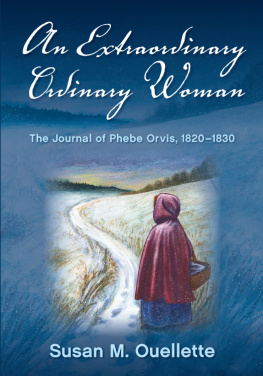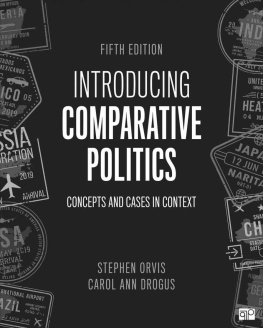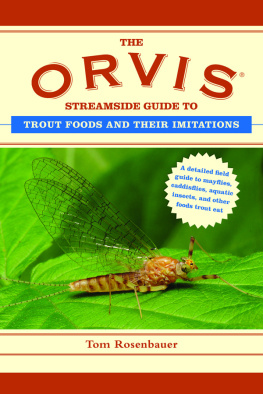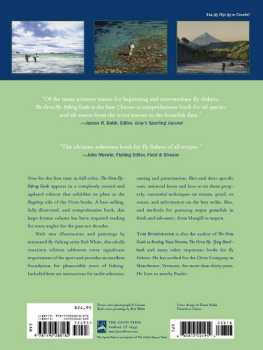The watercolor on the cover is a representation of the figure of Phebe Orvis walking on the way to her new home in New York. Courtesy of the artist Ginny Joyner.
Published by State University of New York Press, Albany
2017 State University of New York
All rights reserved
Printed in the United States of America
No part of this book may be used or reproduced in any manner whatsoever without written permission. No part of this book may be stored in a retrieval system or transmitted in any form or by any means including electronic, electrostatic, magnetic tape, mechanical, photocopying, recording, or otherwise without the prior permission in writing of the publisher.
Excelsior Editions is an imprint of State University of New York Press
For information, contact State University of New York Press, Albany, NY
www.sunypress.edu
Production, Ryan Morris
Marketing, Kate R. Seburyamo
Library of Congress Cataloging-in-Publication Data
Names: Ouellette, Susan M., 1954
Title: An extraordinary ordinary woman : the journal of Phebe Orvis, 18201830 / by Susan M. Ouellette.
Description: Albany, NY : State University of New York Press, [2017] | Series: Excelsior editions | Includes bibliographical references and index.
Identifiers: LCCN 2016031419 (print) | LCCN 2017001941 (ebook) | ISBN 9781438464961 (pbk. : alk. paper) | ISBN 9781438464978 (ebook)
Subjects: LCSH: Orvis, Phebe, 1801 | WomenVermontHistory19th century. | WomenNew York (State)History19th century. | WomenVermontSocial conditions19th century. | WomenNew York (State)Social conditions19th century. | QuakersUnited StatesHistory19th century. | VermontSocial life and customsHistory19th century. | New York (State)Social life and customsHistory19th century.
Classification: LCC HQ1438.V47 O98 2017 (print) | LCC HQ1438.V47 (ebook) | DDC 305.40974309/034dc23
LC record available at https://lccn.loc.gov/2016031419
10 9 8 7 6 5 4 3 2 1
Introduction
W hen Phebe Orvis began her journal in July of 1820, she was nineteen, and living with her maternal grandparents on their farmstead in the hill town of Bristol, Vermont. She was lively yet introspective; popular yet at times shy. At the start of her journal, Orvis was unmarried, but close to the age where her family expected she soon would be. She was literate and loved learning; she was educated beyond common school standards, with a keen interests in books, literature, and life beyond the New Haven Valley. She may have had dreams of something more, but her family expected her to marry, become her husbands helpmeet, and raise children. In short, she was an ordinary woman of her time, with all the inconsistencies and similitude inherent in any human being. What sets Orvis aparteven now in the twenty-first centuryis her diary. The manuscript she left behind is a lens into the intimate details of Orviss life, but also into another age. Although the diary is sometimes formulaic with obscure and even cryptic passages at times, it is also a charming and honest account of her days. It is not literature; rather, it is typical of the type of daybook kept by many individualsmen and womenof Orviss time. Most of her entries begin with a shortsometimes one-worddescription of the weather. This observation is often followed by a list of her daily work, social events, and other details that captured her notice that day. It is not organized in a true narrative form, except that it is chronological. For most of the diary the text moves along in fits and starts and is riddled with unfinished, coded language that made sense to the writer, but not necessarily to a casual reader. So, to follow Orviss story, a reader must use imagination and make certain leaps of faith to tease out the details.
On the other hand, the sum of her prose tells Orviss story. And, her feelingssecret and acknowledgedpeep coyly from underneath the somewhat terse wording. On occasion Orvis did elaborate more descriptively on her deeper feelingsa rhythm shared by many diarists of her day. For instance, in the daybook of Martha Ballard, a midwife who lived on the frontier of Maine settlements from 1785 to 1812, just such a pattern emerges. Mundane references to the weather and lists of chores are interspersed with bouts of introspection that are more revealing. stories are there, often just under the surface, and have to be coaxed to the surface through a careful reading and a little additional research.
It is through those stories that Orviss journal provides a glimpse into the period during which she livedeven as it provides a lens into one womans experience. Moreover, this peek into Orviss experiences reveal fascinating details into particular stages of life, such as her launch into adulthood. In this way, Orviss journal extends the world evoked by Martha Ballards journal; Ballad was a mature woman with mostly grown daughters. Orviss story explores the broader narrative of ordinary women who were contemporaries of Ballards daughters. One can imagine the discussion if these young women met for tea, at a frolic, or exchanged correspondences.
In other ways, Orviss journal bridges the ledger-style journals of Ballards contemporaries and the more emotive, even garrulous, diaries of women whose sensibilities were heightened and trained to see their world through a more distinctly romantic lens. This difference seems to surface in tandem with the emerging class distinctions of the early Republic. Such works were penned by women of more privileged familiesor women who were exposed to more affluent relatives. Their authors lived primarily in the more urbane settings of long-settled New England coastal communities. Orvis was, in comparison to most of these women, less privileged and more ordinaryand lived in a frontier setting. In many ways, these differences make her words more precious.
Like Ballard and other early-nineteenth-century diarists, everything in Orviss life could become grist for her writing. Orvis was a keen observer of her surroundings, and during the period she was actively writing she made entries every day. She was both a participant in and a witness to the affairs of her family, neighbors, and community. And while Orvis rarely wrote more than fifty words in a single entry, the sum of her words frame the details of her life at that time. She was so attuned to the idea of the narrative flow of life, in general, that she likened her own life story to the lyrics of a song or the text of a novel.
Despite her philosophical approach to the narrative of her life, the journal is not a tidy story with a beginning, middle, and end. The entries made at the beginning in July 1820 actually place the reader in the middle of one of Orviss stories: the never-consummated love affair with Adolphus Taylor. This episode captures her life as an unmarried girl with a desire for an education, and a romantic view of married love. It ends with her final capitulation to her familys desire to marry someone else. The rest of her journal captures the stories of her marriage to Samuel Eastmanher familys choice for herand the first years of her life as a wife and mother. Toward the end of the journal, Orviss entries become less regular and more fragmented; her work and family responsibilities clearly occupied all her waking hours. This shift may also be related to the loss of her sense of broadening possibilities as her life took on the same trajectory of all the women she knew. Taken together, the entries made from July of 1820 until October 1830, outline the compelling story of her ambitions, triumphs, sorrows, and failures.











